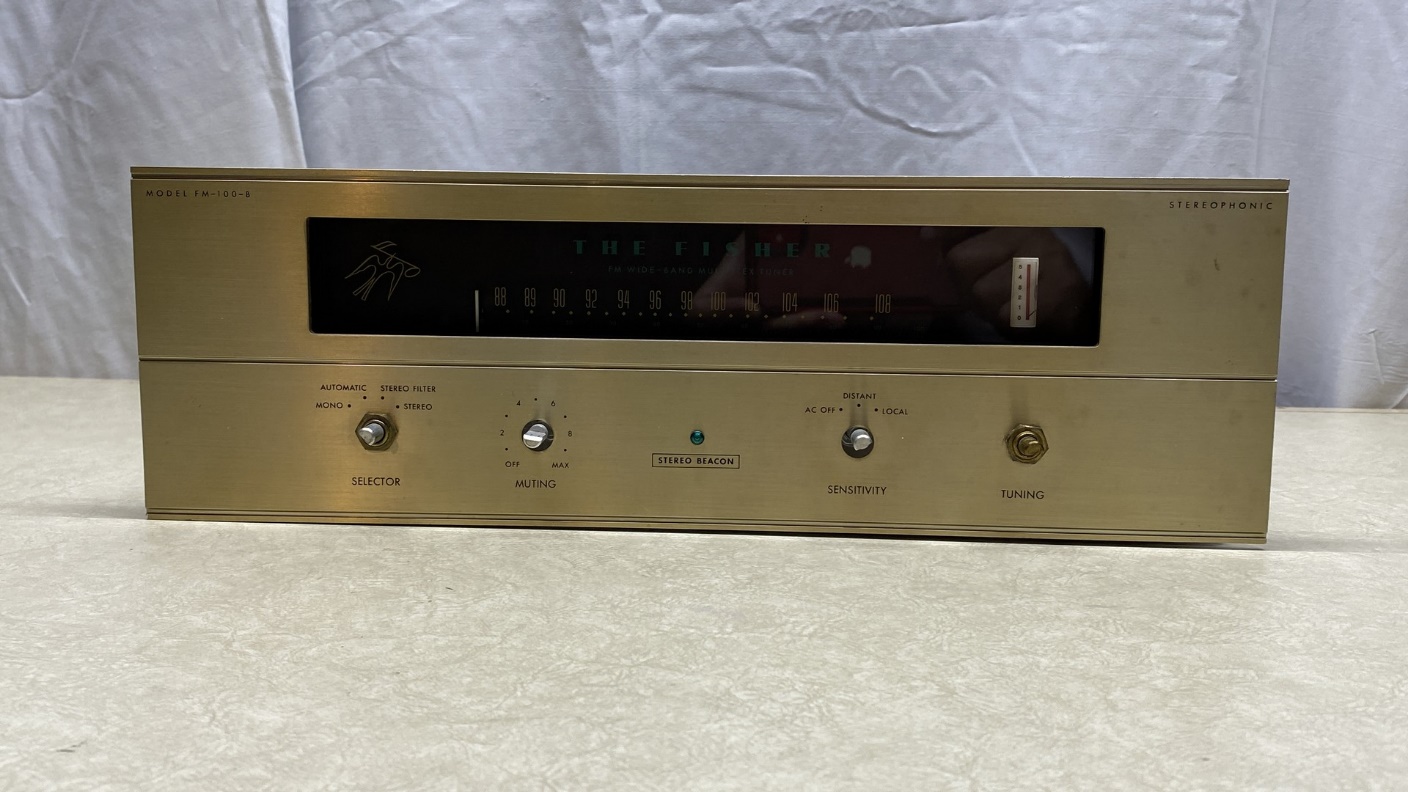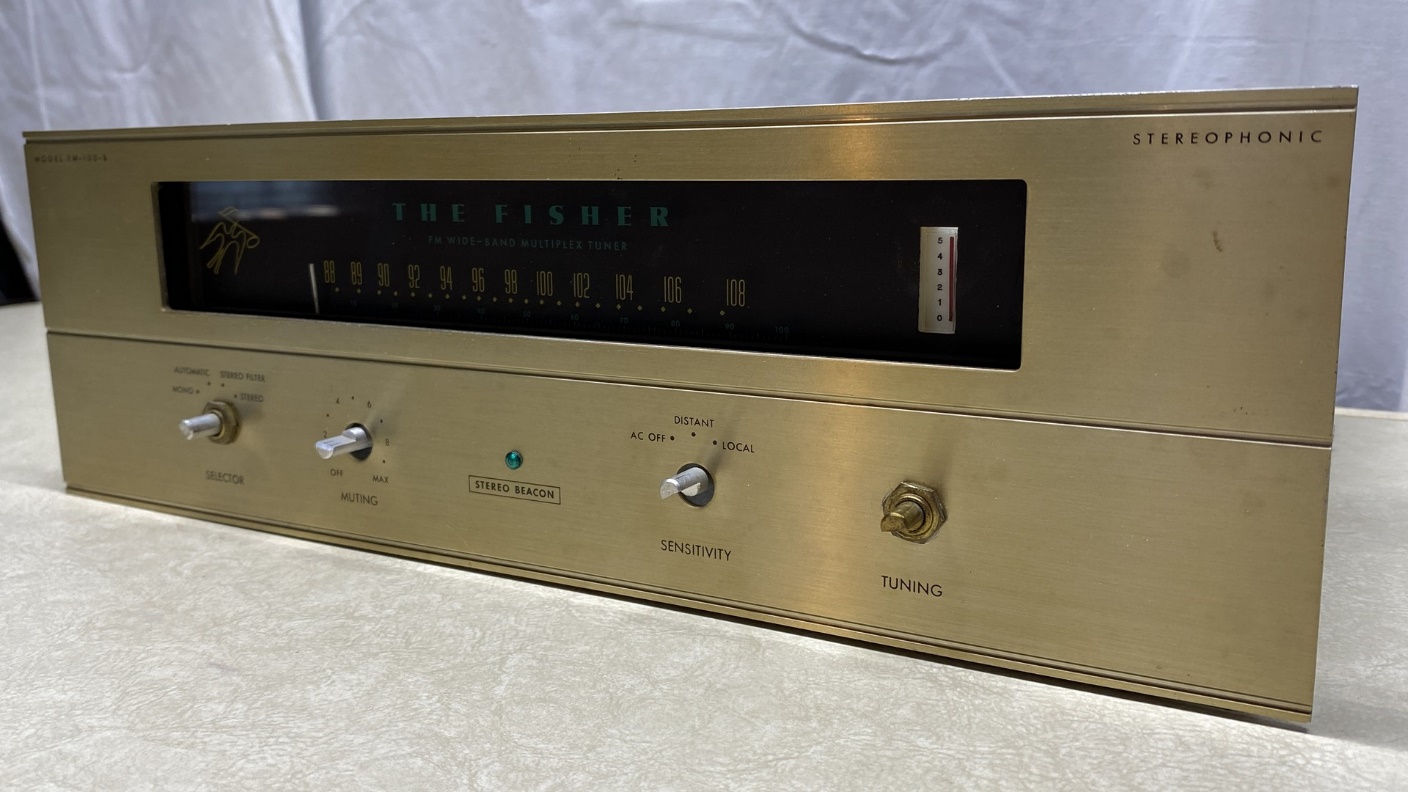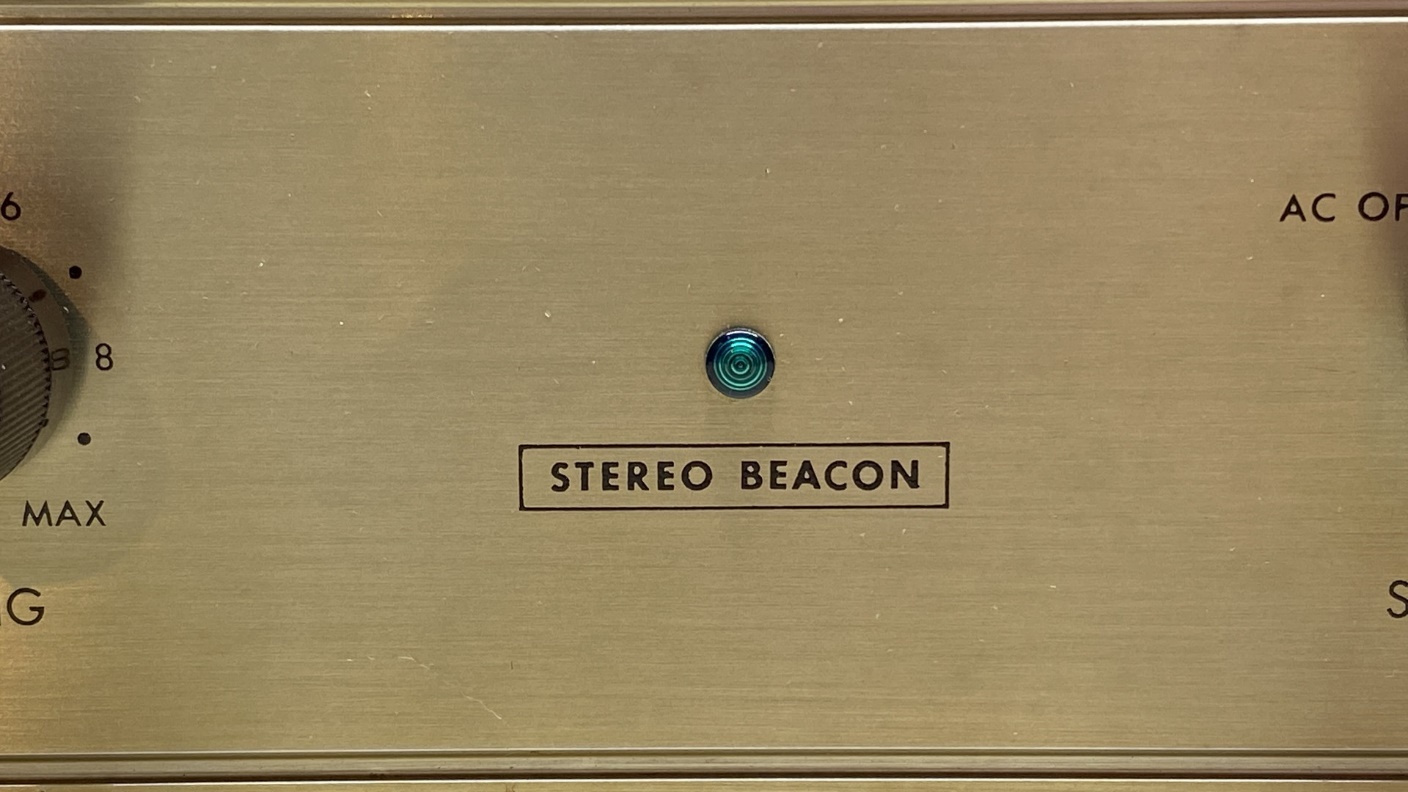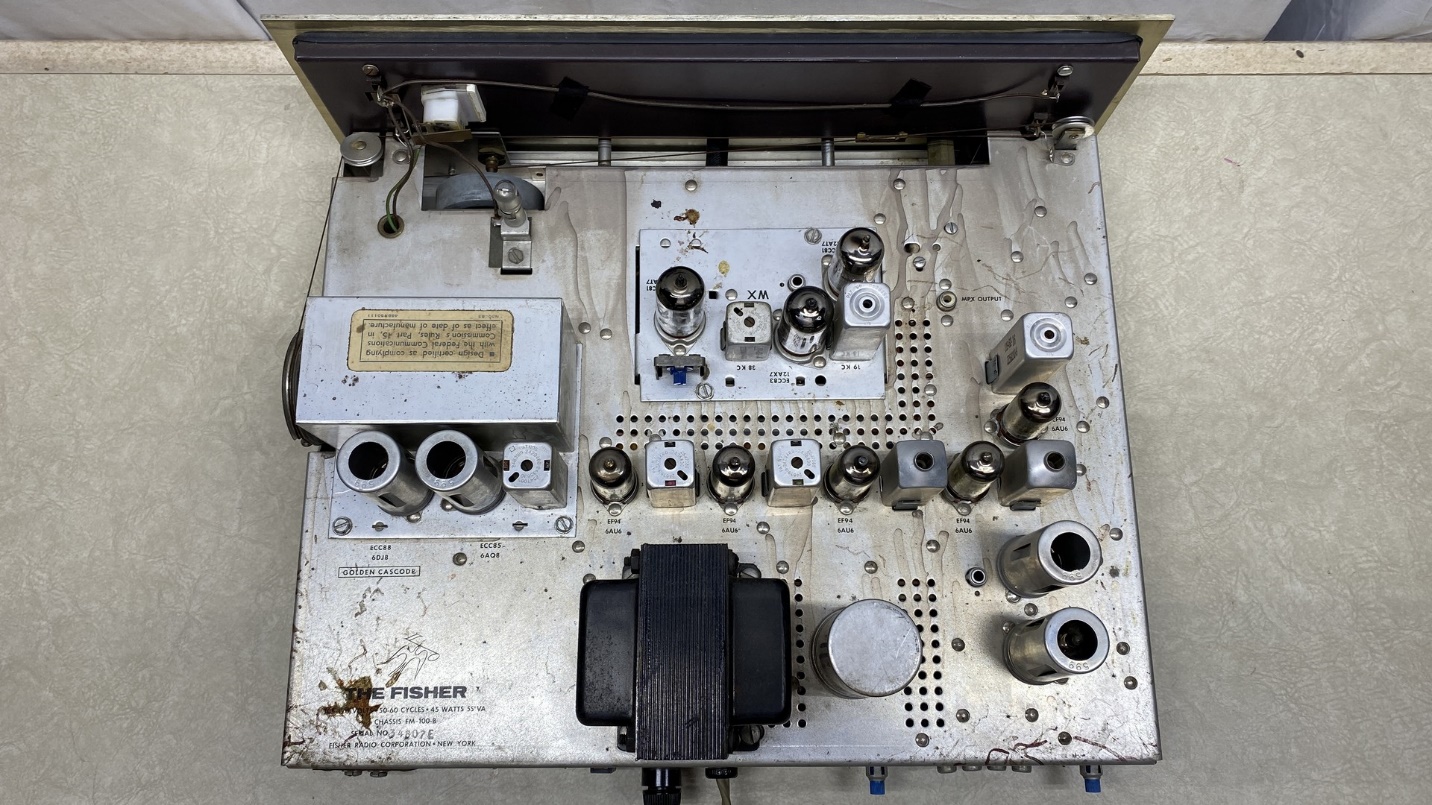
In late summer 1961, Fisher introduced a completely new line of tuners and receivers, all of which included the capability to receive the relatively new, FCC-approved FM Stereo broadcasts utilizing the GE-Zenith multiplex system.
The new 1962 line from Fisher included four all-new tuners. One of these, which fit neatly in the middle between budget and expensive, was the FM-100-B. This tuner had almost everything a person could want in an FM Stereo tuner at the time – a “Golden Cascode” front end with an RF amplifier; five stages of IF amplification; and a dual audio preamp utilizing two 12AX7/ECC83 tubes.

The Fisher FM-100-B FM Stereo tuner.
The FM-100-B was the new FM Stereo replacement for the 1959-60 model FM-100, which had been designed for the Crosby multiplex system.
In reality, the FM-100-B was just as good a tuner as the next higher priced Fisher tuner, the FM-200-B. It lacked the 200-B’s Microtune, a front panel audio level control, and a lamp to indicate when the Muting circuit was on.

Like all Fisher tuners of this period, the FM-100-B is a good looking, symmetrically designed unit. It uses 12 tubes.
The FM-100-B does, however, include a Stereo Beacon lamp to indicate when an FM Stereo station is tuned in, along with a tuning meter to indicate signal strength.
AudioKarma resident Fisher expert Dave Gillespie has called the FM-100-B “Fisher’s best bang for the FM buck.”
“But when it comes to the basics of receiving the station and decoding FM stereo, the 200B and 1000 can’t do it any better than the FM-100B can.”
– Dave Gillespie, AudioKarma

“Stereo Beacon” indicator lamp, Fisher FM-100-B.
I was not really looking for an FM-100-B as I had decided my Fisher specialty would be their mono tuners of 1958-61, as well as their early stereo receivers of 1959-63. But a few months ago, when the opportunity presented itself to acquire an FM-100-B at an unusually low price, I decided to take advantage of the opportunity. It helped that the auction site seller (who, as it turned out, I am acquainted with) sent me an offer at a lower price than it was originally listed.
As you can see in the photos, mine is missing its knobs and was also missing most of its tubes and tube shields, as well as the four bottom feet. It looks good and appears to be in very good condition; it is not missing anything other than what I have previously mentioned, and the electronics underneath do not appear to have been tampered with in any way.

Top of chassis, Fisher FM-100-B. I have rounded up most of the tubes and the missing nine-pin tube shields. I still need the seven-pin tube shields, a 6DJ8 RF amplifier tube, and a 6AQ8 mixer tube.
Once I restore this tuner, I expect it will deliver great performance, almost on the same level as my mono FM-200 tuner, since it has Fisher’s “Golden Cascode” front end plus five stages of IF amplification.
I am looking forward to restoring this tuner soon. In fact, I think I am going to make this my next workbench project.